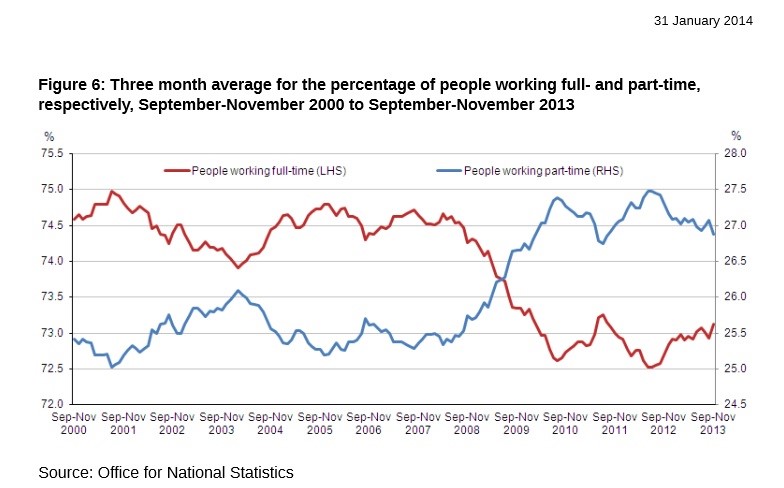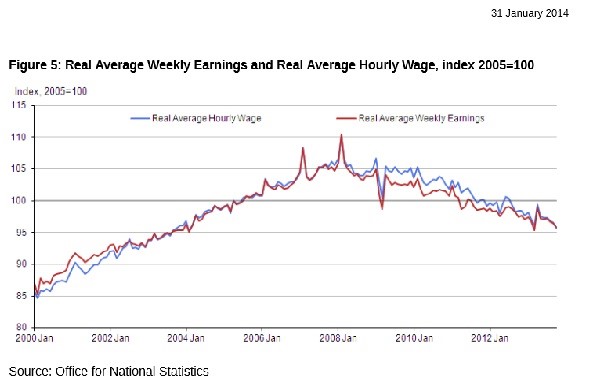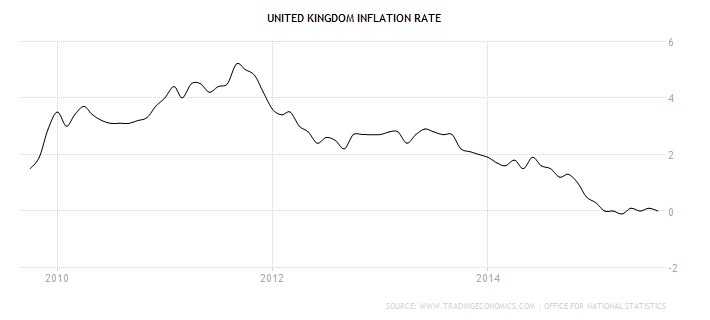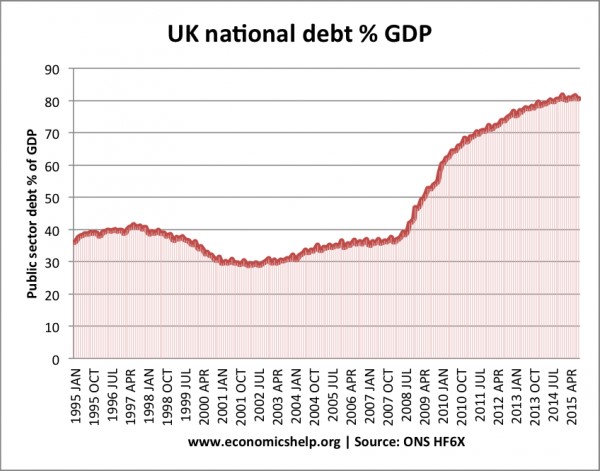Bank of England Monetary Policy Affecting Inflation Rates
| ✅ Paper Type: Free Essay | ✅ Subject: Finance |
| ✅ Wordcount: 2597 words | ✅ Published: 20 Dec 2017 |
Introduction
The intention of this essay is to explain how Bank of England monetary policy has affected inflation rates within Great Britain, we will take data for the time period 2009-the present, the reasoning for this is this was the time-period that ‘Quantitative Easing’ was introduced. It will state recent developments in regard to interest rate policies and highlight what ‘Quantitative Easing’ is and how it forms part of monetary policy. It will use recent data in regard to the setting of interest rates and inflation and how inflation and interest rates affect businesses and individuals.
What is the Bank of England?
The Bank of England is the Central Bank of the United Kingdom. The mission of the bank is “to promote the good of the people of the United Kingdom by maintaining monetary and financial stability”; she is sometimes referred to as the “Old Lady of Threadneedle Street” and was founded in 1694 (Bank of England, 2015).
A Central Bank “is nowadays primarily an agency for monetary policy. It usually also has important financial stability functions, and those become more prominent during times of financial turmoil,” (Ortiz and Yam, 2009, pp.17) and although it has many differing functions dependant on which country the central bank operates in “one could infer that the objective underlying all functions was “for the economic interests of the nation, consistent with government economic policy”” (Ortiz and Yam, 2009, pp.18).
The Bank of England is engaged in all of these functions, however the purpose of this essay is to highlight monetary policy and inflationary matters; as such we will now concentrate on the monetary policy function of the Bank of England.
What is Monetary Policy?
Monetary Policy has been defined as “the macroeconomic policy laid down by the central bank. It involves management of money supply and interest rate and is the demand side of economic policy used by the government of a country to achieve macroeconomic objectives like inflation, consumption, growth and liquidity” (Economic Times, 2015). Within the United Kingdom, the Bank of England has a Monetary Policy Committee (MPC), “The MPC sets an interest rate it judges will enable the inflation target to be met,” (Bank of England, 2015) this target is “defined by the Government set inflation target of a 2 per cent year-over-year increase in the Consumer Prices Index” (Bank of England, 2015).
Monetary Policy is important as it is used to maintain and engineer stable prices and confidence in the currency through the setting of interest rates, again this is defined by the government’s inflation target. A central bank has two tools it can use to try to influence the economy in terms of monetary policy; the setting of interest rates and the expansion and contraction of the money supply.
One of the key elements of monetary policy is how a central bank tries to keep the supply and demand for goods in some form of equilibrium by changing its official interest rate. This is known as the ‘Base Rate’ or ‘Bank Rate’, and it signals and attempt to influence the overall level of activity in the economy. “When demand for goods and services in the economy exceed supply, inflation tends to rise above the Bank’s target rate of 2%. On the other hand, when supply exceeds demand, inflation tends to fall below the Bank’s 2% target” (Bank of England, 2015). By changing the interest rate the bank is able to influence other banks and building societies in their borrowing and lending activities and therefore affect spending in the economy. It does this in an attempt to keep inflation in line with its pre-determined target of 2%. “A reduction in interest rates makes saving less attractive and borrowing more attractive, which stimulates spending. Lower interest rates can also affect consumers’ and firms’ cash-flow – a fall in interest rates reduces the income from savings and the interest payments due on loans.” (Bank of England, 2015)
Another, more unconventional, form of monetary policy is that of “Quantitative Easing”. This is when a “Central Bank creates new money electronically to buy financial assets, like government bonds. This process aims to directly increase private sector spending in the economy and return inflation to target.” (Bank of England, 2015) This was first used in the UK in March 2009 and involves the “cash injection [which] lowers the cost of borrowing and boosts asset prices to support spending and get inflation back to target. If inflation looks like being too high, the Bank of England can sell these assets to reduce the amount of money and spending in the economy.” (Bank of England, 2015) Considering the current state of the British economy with a transition from a majority of full-time to part-time workers (see Fig.2), a decrease in the real wage growth (see Fig.3) and a decrease in real average weekly earnings (see Fig.4) it can be stated that the Bank’s current monetary policy is acting against its own interests; “Promoting the good of the people of the United Kingdom by maintaining monetary and financial stability” (Bank of England, 2015).

(Fig.2)

(Fig.3)

(Fig.4)
What is Inflation?
Inflation has been defined in a number of ways, one of these definitions is that it “is the rate of increase in prices for goods and services [and] there are a number of different measures of inflation in use. The most frequently quoted and most significant one [is] the Consumer Prices Index (CPI)” (BBC, 2015)
CPI is “the speed at which the prices of the goods and services bought by households rise or fall. Consumer price inflation is estimated by using price indices. The price index estimates changes to the total cost of this basket. Most ONS price indices are published monthly. (ONS, 2013)
Inflation is of great significance as it affects the prices of all goods and services, and as mentioned above it has an effect on real wages and their growth, its affects on businesses and therefore their employment policies i.e. full time as opposed to part-time employment, consumption and an ability to save.
Recent Monetary Policy
We have established that Monetary Policy consists of a setting of an Interest Rate or ‘Bank Rate’ and also a relatively new form of monetary policy called ‘Quantitative Easing’. Since ‘Quantitative Easing’ is new and was first introduced in 2009 we will use policy and the relevant interest rates relating to this time-period.
The following is an extract taken from the Bank of England’s website: “The previous change in Bank Rate was a reduction of 0.5 percentage points to 0.5% on 5 March 2009. A programme of asset purchases financed by the issuance of central bank reserves was initiated on 5 March 2009. The previous change in the size of that programme was an increase of £50 billion to a total £375 billion on 5 July 2012.” (Bank of England, 2015) As we can see the Bank has kept its interest rate policy at a constant for the last 6 years, a record-low.
Recent Inflation
Using the same time-period as above we can show the inflation rate and how it has fluctuated:

(Fig 1.)
As can be seen from the graph above the level of inflation began to appreciate with the setting of the 0.5% interest rate which is in conjunction with economic theory as individuals tend to borrow therefore spend more which leads companies to raise prices. However, during 2012 other factors came into effect and we have seen depreciation in inflation. Of late one such factor could be the decrease in oil prices which has lead “to significant revenue shortfalls in many energy exporting nations, while consumers in many importing countries are likely to have to pay less to heat their homes or drive their cars.” (BBC, 2015). This is of importance as consumers use oil and other natural resources and it makes up part of their essential consumption, for example, if oil prices decrease then the cost of travelling, heating and lighting becomes cheaper.
As can be seen from the graph and the monetary policy that has been implemented by the Bank of England we can see the bank has entered into an unknown territory in that it has encountered an inflation level very close to 0% and also have an interest rate policy close to 0%. The level of inflation is below its desired target of 2% and therefore they, ideally, would like to be in a position to lower the interest rate to generate an increase in inflation, however, should the Bank of England begin to increase interest rates we would see an increase in the payments of debt. This remains true for governments also, with Britain’s debt rapidly increasing as a percentage of GDP (see Fig.5) this would ensure if not increase the probability of the government itself defaulting on its debt. With many other factors such as lowering oil prices, high unemployment, and a decrease in consumers’ disposable income aiding in the depreciation of inflation it will be interesting to see the Bank of England’s next change in monetary policy and to observe its implications.

(Fig.5)
The Effects of Inflation
Inflation has many different effects on a variety of different practitioners such as businesses and individuals. For businesses high levels of inflation can lead to higher sales revenue and therefore higher profit margins, however, this can be a short-lived occurrence as the cost of sales will also be affected increasing business costs and lowering profit margins. It is also likely that employees will at some-point request an increase in wages to keep pace with the raising costs of goods and services. Business will also need to be aware of the changing conditions within central and commercial banks as if inflation is raising beyond a pre-determined level then the central banks will alter their interest rate to ensure they meet their targets. This in turn will affect commercial banks and therefore the general cost of borrowing; this can also effect debt repayments and eventually profit-margins.
Low levels of inflation can also lead to higher sales revenue as customers take advantage of an increase in purchasing power and are therefore more likely to make rapid purchases, however, when inflation levels are low this suggests that interest rates are high and therefore saving becomes more attractive however this is not always the case. This could then lead to lower sales revenue as consumers will tend to favour savings over spending.
For individuals, high levels of inflation mean that prices of goods and services are increasing therefore individuals on a fixed income are proportionately spending a larger amount of their income on essentials, leading to a lower amount of disposable income. This means that interest rates are low and therefore saving becomes unattractive leaving consumers at the behest of the macroeconomic environment. However, dependant on the levels of inflation it is quite likely that the central banks will adjust interest rates accordingly and raise them, allowing consumers to benefit from the possibility of saving.
There are some other external factors which are out of the control of the Bank of England which also have an effect on British consumers and inflation such as “currency exchange rates, other countries interest rates and oil prices.” (Ramady, 2009, pp.10)
Conclusion
In conclusion, we have discussed the Bank of England and its monetary policy and how the setting of interest rates has an effect on inflation and how this in turn affects businesses and individuals. We have seen that there are numerous different ways in which interest rates and inflation can be adjusted given the economic environment and how the central bank and commercial banks control monetary policy to meet a pre-determined inflationary target – this target is 2% within the United Kingdom.
We have also used data and recent policy to illustrate the affects, which has brought us to an interesting point in economic history in that the central bank, commercial banks, businesses – large and small – and consumers have entered into a predicament in that we have a situation where both inflation and interest rates have reached near or exactly 0%. The central banks, various other large financial and political institutions must now create and adapt to a different strategy as it seems they have exhausted the use of their monetary policy tools and although ‘Quantitative Easing’ tends to boost the economy short-term, we have still seen this new tool used on multiple occasions.
It seems that if their current strategy was working, why all around the world are we continuing to observe economic instability in various forms such as high unemployment, highly volatile inflation – and deflation in some areas -, a reduction in real wages and a shift from mainly full-time to part-time working hours, these different negative economic consequences of a policy that results in more instability whilst the stated of objective of the institution is “Promoting the good of the people of the United Kingdom by maintaining monetary and financial stability”(Bank of England, 2015).
Bibliography
- Bank of England. (2015). “About the Bank”. Available at: http://www.bankofengland.co.uk/about/Pages/default.aspx
- Bank of England. (2015). “Bank of England maintains Bank Rate at 0.5% and the size of the Asset Purchase Programme at £375 billion.” Available at: http://www.bankofengland.co.uk/publications/Pages/news/2015/004.aspx
- Bank of England. (2015). “How does monetary policy work?” Available at: http://www.bankofengland.co.uk/monetarypolicy/Pages/how.aspx
- Bank of England. (2015). “Monetary Policy Committee (MPC).” Available at: http://www.bankofengland.co.uk/monetarypolicy/Pages/overview.aspx
- Bank of England. (2015). “Promoting the good of the people of the United Kingdom by maintaining monetary and financial stability” http://www.bankofengland.co.uk/Pages/home.aspx
- Bank of England. (2015). “What is Quantitative Easing?” Available at: http://www.bankofengland.co.uk/monetarypolicy/Pages/qe/default.aspx
- Bank of England. (2015). “What we do.” Available at: http://www.bankofengland.co.uk/about/Pages/onemission/default.aspx
- BBC. (2015). “Falling Oil Prices: Who are the winners and losers?” Available at: http://www.bbc.co.uk/news/business-29643612
- BBC. (2015). “Q&A: Inflation Explained.” Available at: http://www.bbc.co.uk/news/business-12196322
- Economic Times. (2015). “Definition of ‘Monetary Policy’”. Available at: http://economictimes.indiatimes.com/definition/monetary-policy
- Ortiz, S. And Yam, J. (2009). “Issues in the Governance of Central Banks”, Central Bank Governance Group, pp.17, [PDF]. Available at: http://www.bis.org/publ/othp04.pdf
- Telegraph. (2015). “Inflation: RPI, CPI and RPIJ explained.” Available at: http://www.telegraph.co.uk/finance/economics/9792480/Inflation-RPI-CPI-and-RPIJ-explained.html
- Bank of England. (2015). “QE – Quantitative Easing (QE) – Injecting Money Into The Economy.” http://www.bankofengland.co.uk/education/Documents/resources/postcards/qecomp.pdf
- Office of National Statistics (ONS), (2013). “Consumer Price Indices – A Brief Guide” http://www.ons.gov.uk/ons/guide-method/user-guidance/prices/cpi-and-rpi/consumer-price-indices–a-brief-guide.pdf
- Bank of England. (2015). “Quantitative Easing (QE) – Injecting Money Into The Economy” [PDF] http://www.bankofengland.co.uk/education/Documents/resources/postcards/qecomp.pdf
- Ramady, M. (2009). “External and Internal Determinants of Inflation: A Case Study of Saudi Arabia,” Middle East Journal of Economics and Finance, pp.10 [PDF] Available at: http://faculty.kfupm.edu.sa/FINEC/ramadyma/articles/External%20&%20Internal%20Determinants%20of%20inflation-A%20Case%20Study%20of%20Saudi%20Arabia.pdf
Illustrations
Figure 1. United Kingdom Inflation Rate (1915) [Image] Available at: http://www.tradingeconomics.com/united-kingdom/inflation-cpi
Figure 2. Three month average for the percentage of people working full and part time respectively, September-November 2000 to September-November 2013 [Image] pp.9 Available at: http://www.ons.gov.uk/ons/dcp171766_351467.pdf
Figure 3. AWE real wage growth and the range of real wage growth estimates using other ONS wages and price series, Q1 2001 to Q3 2013, per cent change on the same quarter a year ago [Image] pp.5 Available at: http://www.ons.gov.uk/ons/dcp171766_351467.pdf
Figure 4. Real Average Weekly Earnings and Real Average Hourly Wage, Index 2005=100 [Image] pp.8 Available at: http://www.ons.gov.uk/ons/dcp171766_351467.pdf
Figure 5. UK National Debt % GDP [Image] Available at: http://www.economicshelp.org/blog/334/uk-economy/uk-national-debt/
Cite This Work
To export a reference to this article please select a referencing stye below:
Related Services
View allDMCA / Removal Request
If you are the original writer of this essay and no longer wish to have your work published on UKEssays.com then please click the following link to email our support team:
Request essay removal



